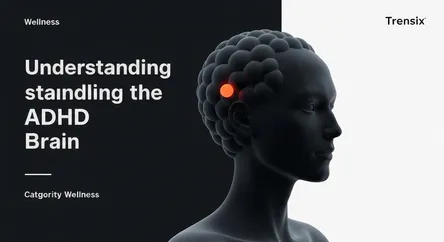Wellness
Understanding the ADHD Brain

A look into the unique structure and function of the ADHD brain, explaining how it differs from a neurotypical brain and affects daily life.
What is it?
The brain of an individual with Attention-Deficit/Hyperactivity Disorder (ADHD) has measurable structural and chemical differences. Research shows variations in the size and maturation rate of key areas like the prefrontal cortex, which is crucial for executive functions. Functionally, ADHD is linked to an imbalance in neurotransmitters, primarily dopamine and norepinephrine, chemicals responsible for signaling between brain cells. This affects the brain's neural networks, which are involved in focus, planning, and impulse control. These neurological distinctions mean the brain processes information differently, classifying ADHD as a neurodevelopmental disorder, not a behavioral choice.
Why is it trending?
Awareness of ADHD as a neurological condition is growing, fueled by destigmatization efforts and open discussions on social media. Advances in neuroimaging have provided concrete evidence of the physical brain differences, validating the experiences of many. This scientific backing has shifted public perception from viewing ADHD as a lack of willpower to understanding it as a legitimate neurodivergence. As more people recognize the symptoms in themselves and others, interest in the underlying brain science has surged, with many seeking to understand the "why" behind their daily challenges.
How does it affect people?
These brain differences directly impact daily life by impairing executive functions. This can manifest as difficulty with organization, time management, initiating tasks, and maintaining focus. People with ADHD may also struggle with emotional regulation, leading to heightened frustration or impulsivity. Simple tasks like remembering appointments or managing clutter can become overwhelming. These challenges can significantly affect performance at work and school, as well as complicate interpersonal relationships, highlighting the widespread impact of these unique brain functions.